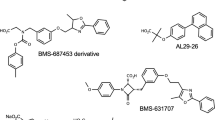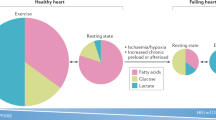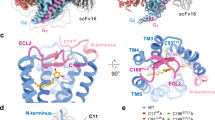Abstract
The nuclear receptor peroxisome proliferator–activated receptor-γ (PPARγ) has important roles in adipogenesis and immune response as well as roles in both lipid and carbohydrate metabolism. Although synthetic agonists for PPARγ are widely used as insulin sensitizers, the identity of the natural ligand(s) for PPARγ is still not clear. Suggested natural ligands include 15-deoxy-Δ12,14-prostaglandin J2 and oxidized fatty acids such as 9-HODE and 13-HODE. Crystal structures of PPARγ have revealed the mode of recognition for synthetic compounds. Here we report structures of PPARγ bound to oxidized fatty acids that are likely to be natural ligands for this receptor. These structures reveal that the receptor can (i) simultaneously bind two fatty acids and (ii) couple covalently with conjugated oxo fatty acids. Thermal stability and gene expression analyses suggest that such covalent ligands are particularly effective activators of PPARγ and thus may serve as potent and biologically relevant ligands.
This is a preview of subscription content, access via your institution
Access options
Subscribe to this journal
Receive 12 print issues and online access
$189.00 per year
only $15.75 per issue
Buy this article
- Purchase on Springer Link
- Instant access to full article PDF
Prices may be subject to local taxes which are calculated during checkout






Similar content being viewed by others
References
Tontonoz, P. & Spiegelman, B.M. Fat and beyond: the diverse biology of PPARγ. Annu. Rev. Biochem. 77, 289–312 (2008).
Lehmann, J.M. et al. An antidiabetic thiazolidinedione is a high affinity ligand for peroxisome proliferator-activated receptor γ (PPARγ). J. Biol. Chem. 270, 30221–30229 (1995).
Kliewer, S.A. et al. A prostaglandin J2 metabolite binds peroxisome proliferator-activated receptor gamma and promotes adipocyte differentiation. Cell 83, 813–819 (1995).
Forman, B.M. et al. 15-Deoxy-Δ12,14-prostaglandin J2 is a ligand for the adipocyte determination factor PPARγ. Cell 83, 803–812 (1995).
Powell, W.S. 15-Deoxy-Δ12,14–PGJ2: endogenous PPARγ ligand or minor eicosanoid degradation product? J. Clin. Invest. 112, 828–830 (2003).
Kliewer, S.A. et al. Fatty acids and eicosanoids regulate gene expression through direct interactions with peroxisome proliferator-activated receptors α and γ. Proc. Natl. Acad. Sci. USA 94, 4318–4323 (1997).
Krey, G., Braissant, O., L'Horset, F. & Kalkhoven, E. Fatty acids, eicosanoids, and hypolipidemic agents identified as ligands of peroxisome proliferator- activated receptors by coactivator-dependent receptor ligand assay. Mol. Endocrinol. 11, 779–791 (1997).
Nagy, L., Tontonoz, P., Alvarez, J.G., Chen, H. & Evans, R.M. Oxidized LDL regulates macrophage gene expression through ligand activation of PPARγ. Cell 93, 229–240 (1998).
Marx, N., Bourcier, T., Sukhova, G.K., Libby, P. & Plutzky, J. PPARγ activation in human endothelial cells increases plasminogen activator inhibitor type-1 expression: PPARγ as a potential mediator in vascular disease. Arterioscler. Thromb. Vasc. Biol. 19, 546–551 (1999).
Schild, R.L. et al. The activity of PPARγ in primary human trophoblasts is enhanced by oxidized lipids. J. Clin. Endocrinol. Metab. 87, 1105–1110 (2002).
Renaud, J.P. & Moras, D. Structural studies on nuclear receptors. Cell. Mol. Life Sci. 57, 1748–1769 (2000).
Nagy, L. & Schwabe, J.W. Mechanism of the nuclear receptor molecular switch. Trends Biochem. Sci. 29, 317–324 (2004).
Khorasanizadeh, S. & Rastinejad, F. Nuclear-receptor interactions on DNA-response elements. Trends Biochem. Sci. 26, 384–390 (2001).
Johnson, B.A. et al. Ligand-induced stabilization of PPARγ monitored by NMR spectroscopy: implications for nuclear receptor activation. J. Mol. Biol. 298, 187–194 (2000).
Kallenberger, B.C., Love, J.D., Chatterjee, V.K. & Schwabe, J.W. A dynamic mechanism of nuclear receptor activation and its perturbation in a human disease. Nat. Struct. Biol. 10, 136–140 (2003).
Bruning, J.B. et al. Partial agonists activate PPARγ using a helix 12 independent mechanism. Structure 15, 1258–1271 (2007).
Cronet, P. et al. Structure of the PPARα and -γ ligand binding domain in complex with AZ 242; ligand selectivity and agonist activation in the PPAR family. Structure 9, 699–706 (2001).
Gampe, R.T., Jr et al. Asymmetry in the PPARγ/RXRα crystal structure reveals the molecular basis of heterodimerization among nuclear receptors. Mol. Cell 5, 545–555 (2000).
Nolte, R.T. et al. Ligand binding and co-activator assembly of the peroxisome proliferator-activated receptor-γ. Nature 395, 137–143 (1998).
Pochetti, G. et al. Insights into the mechanism of partial agonism: crystal structures of the peroxisome proliferator-activated receptor γ ligand-binding domain in the complex with two enantiomeric ligands. J. Biol. Chem. 282, 17314–17324 (2007).
Brunger, A.T. Version 1.2 of the Crystallography and NMR system. Nat. Protocols 2, 2728–2733 (2007).
Oakley, A.J. et al. The three-dimensional structure of the human Pi class glutathione transferase P1–1 in complex with the inhibitor ethacrynic acid and its glutathione conjugate. Biochemistry 36, 576–585 (1997).
Szatmari, I. et al. Activation of PPARγ specifies a dendritic cell subtype capable of enhanced induction of iNKT cell expansion. Immunity 21, 95–106 (2004).
Sarraf, P. et al. Loss-of-function mutations in PPARγ associated with human colon cancer. Mol. Cell 3, 799–804 (1999).
Shiraki, T. et al. α,β-unsaturated ketone is a core moiety of natural ligands for covalent binding to peroxisome proliferator-activated receptor γ. J. Biol. Chem. 280, 14145–14153 (2005).
Soares, A.F. et al. Covalent binding of 15-deoxy-Δ12,14-prostaglandin J2 to PPARγ. Biochem. Biophys. Res. Commun. 337, 521–525 (2005).
Schopfer, F.J. et al. Fatty acid transduction of nitric oxide signaling. Nitrolinoleic acid is a hydrophobically stabilized nitric oxide donor. J. Biol. Chem. 280, 19289–19297 (2005).
Baker, L.M. et al. Nitro-fatty acid reaction with glutathione and cysteine. Kinetic analysis of thiol alkylation by a Michael addition reaction. J. Biol. Chem. 282, 31085–31093 (2007).
Erlemann, K.R., Rokach, J. & Powell, W.S. Oxidative stress stimulates the synthesis of the eosinophil chemoattractant 5-oxo-6,8,11,14-eicosatetraenoic acid by inflammatory cells. J. Biol. Chem. 279, 40376–40384 (2004).
Powell, W.S., Gravel, S. & Gravelle, F. Formation of a 5-oxo metabolite of 5,8,11,14,17-eicosapentaenoic acid and its effects on human neutrophils and eosinophils. J. Lipid Res. 36, 2590–2598 (1995).
Ting-Beall, H.P., Needham, D. & Hochmuth, R.M. Volume and osmotic properties of human neutrophils. Blood 81, 2774–2780 (1993).
Itoh, T., Murota, I., Yoshikai, K., Yamada, S. & Yamamoto, K. Synthesis of docosahexaenoic acid derivatives designed as novel PPARγ agonists and antidiabetic agents. Bioorg. Med. Chem. 14, 98–108 (2006).
Yamamoto, K. et al. Identification of putative metabolites of docosahexaenoic acid as potent PPARγ agonists and antidiabetic agents. Bioorg. Med. Chem. Lett. 15, 517–522 (2005).
Leslie, A.G. The integration of macromolecular diffraction data. Acta Crystallogr. D Biol. Crystallogr. 62, 48–57 (2006).
Collaborative Computational Project, Number 4. The CCP4 suite: programs for protein crystallography. Acta Crystallogr. D Biol. Crystallogr. 50, 760–763 (1994).
Emsley, P. & Cowtan, K. Coot: model-building tools for molecular graphics. Acta Crystallogr. D Biol. Crystallogr. 60, 2126–2132 (2004).
Murshudov, G.N., Vagin, A.A. & Dodson, E.J. Refinement of macromolecular structures by the maximum-likelihood method. Acta Crystallogr. D Biol. Crystallogr. 53, 240–255 (1997).
Acknowledgements
MS was carried out by A.R. Bottrill and S. Ibrahim of the Protein and Nucleic Acid Chemistry Laboratories (PNACL) Proteomics Facility at the University of Leicester. The Schwabe laboratory is supported by the Wellcome Trust. The Nagy laboratory is supported by the Howard Hughes Medical Institute, the Wellcome Trust and the Hungarian Scientific Research Fund. We acknowledge the European Synchrotron Radiation Facility (ESRF) for provision of synchrotron radiation facilities and thank the staff on beamline ID14.3.
Author information
Authors and Affiliations
Contributions
T.I. and K.Y. designed and prepared the ligands (except 9-HODE and 13-HODE). T.I., L.F. and K.A. cloned, expressed and purified PPARγ and grew the crystals. T.I., L.F., K.A. and J.W.R.S. carried out the crystallographic structure determinations. T.I. prepared samples for MS. L.F. and K.A. performed the CD experiments. A.S., B.L.B. and L.N. designed and carried out the reporter gene and transcription assays shown in Figure 5 and in Supplementary Figures 1 and 2. Y.I. and K.Y. designed and carried out the reporter gene assays shown in Figure 6. J.W.R.S. supervised the project and prepared the manuscript with assistance from T.I. and L.F. and helpful comments from L.N. and K.Y.
Corresponding author
Ethics declarations
Competing interests
K.Y. has filed patent applications relating to the compounds 4-HDHA, 4-oxoDHA, 5-HEPA and 5-oxoEPA. These have been assigned to Pronova BioPharma. No other authors have competing financial interests.
Supplementary information
Supplementary Text and Figures
Supplementary Figures 1 and 2, and Supplementary Methods (PDF 380 kb)
Rights and permissions
About this article
Cite this article
Itoh, T., Fairall, L., Amin, K. et al. Structural basis for the activation of PPARγ by oxidized fatty acids. Nat Struct Mol Biol 15, 924–931 (2008). https://doi.org/10.1038/nsmb.1474
Received:
Accepted:
Published:
Issue Date:
DOI: https://doi.org/10.1038/nsmb.1474
This article is cited by
-
Stress-induced stenotic vascular remodeling via reduction of plasma omega-3 fatty acid metabolite 4-oxoDHA by noradrenaline
Scientific Reports (2024)
-
Senescence-associated 13-HODE production promotes age-related liver steatosis by directly inhibiting catalase activity
Nature Communications (2023)
-
Maternal PUFAs, Placental Epigenetics, and Their Relevance to Fetal Growth and Brain Development
Reproductive Sciences (2023)
-
Cancer metabolism and intervention therapy
Molecular Biomedicine (2021)
-
Lipoxygenase catalyzed metabolites derived from docosahexaenoic acid are promising antitumor agents against breast cancer
Scientific Reports (2021)



